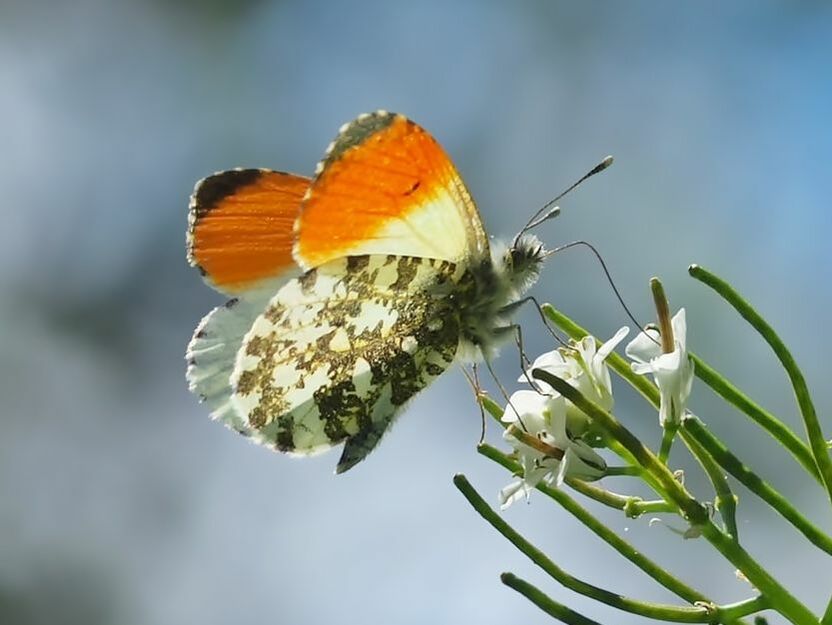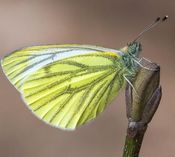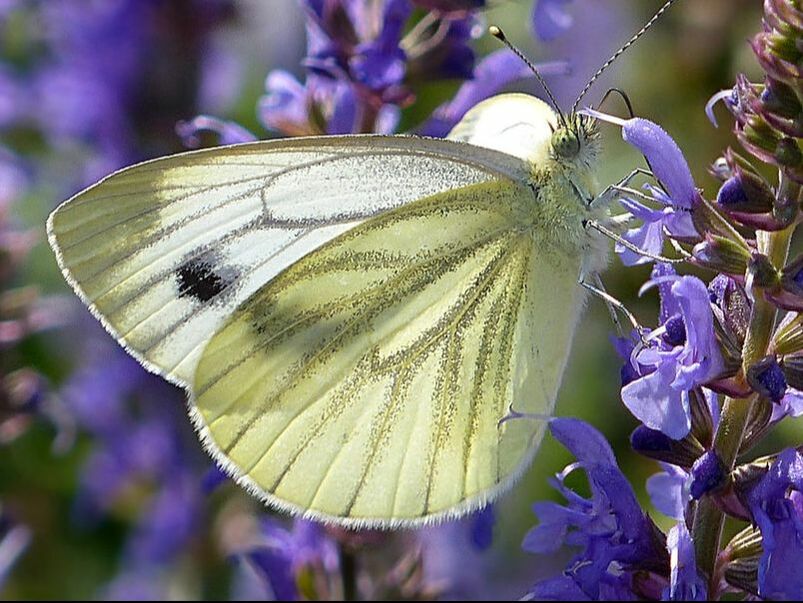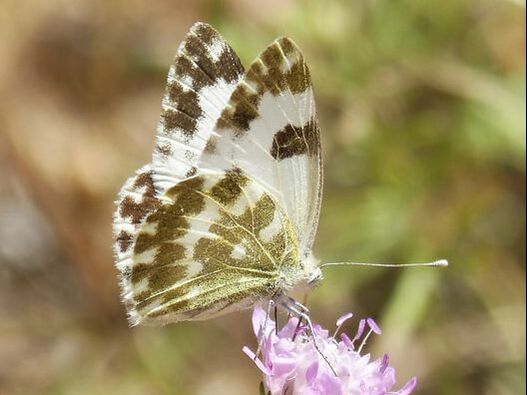Garlic Mustard, Charlock, Cuckooflower & other Crucifers
Key foodplants of caterpillars of the Orange Tip, Green-veined White, Small White and Bath White
Key foodplants of caterpillars of the Orange Tip, Green-veined White, Small White and Bath White
The Crucifer family is familiar to most of us as boiled vegetable greens, as it includes crops like cabbages, broccoli, brussel sprouts, cauliflower and kale, all of which have been bred from far more modest wild species.
Although Cabbage White butterflies have a great liking for the leaves of these horticultural varieties when kindly presented to them by optimistic gardeners, most related butterflies have remained loyal to wild hedgerow crucifers. These include Garlic Mustard (Alliaria petiolata), Charlock (Sinapsis arvensis) and Cookooflower (Cardamine pratensis) often known as Lady's Smock, all of which produce succulent seed pods - as indeed would the domestic cabbage if allowed to reach maturity - and it is these seedpods which the caterpillars consume, rather than the leaves.
Garlic Mustard and other crucifers growing on the south-facing side of a loose hedge are ideal, and that's the best place to plant them to encourage butterflies like the Orange-tips. As Orange-tips live in colonies and rarely venture far away, to stand a reasonable chance of attracting them to an unoccupied hedgerow on your land there needs to be a colony nearby. Alternatively once a new habitat is established, or an old one restored, it may be possible for a conservation group to introduce Orange-tips as eggs or caterpillars. The Small White is more free-ranging and likely to find your offerings.
INCREASE BIODIVERSITY BY GROWING GARLIC MUSTARD AND OTHER CRUCIFERS TO SUPPORT THE BUTTERFLIES BELOW
Although Cabbage White butterflies have a great liking for the leaves of these horticultural varieties when kindly presented to them by optimistic gardeners, most related butterflies have remained loyal to wild hedgerow crucifers. These include Garlic Mustard (Alliaria petiolata), Charlock (Sinapsis arvensis) and Cookooflower (Cardamine pratensis) often known as Lady's Smock, all of which produce succulent seed pods - as indeed would the domestic cabbage if allowed to reach maturity - and it is these seedpods which the caterpillars consume, rather than the leaves.
Garlic Mustard and other crucifers growing on the south-facing side of a loose hedge are ideal, and that's the best place to plant them to encourage butterflies like the Orange-tips. As Orange-tips live in colonies and rarely venture far away, to stand a reasonable chance of attracting them to an unoccupied hedgerow on your land there needs to be a colony nearby. Alternatively once a new habitat is established, or an old one restored, it may be possible for a conservation group to introduce Orange-tips as eggs or caterpillars. The Small White is more free-ranging and likely to find your offerings.
INCREASE BIODIVERSITY BY GROWING GARLIC MUSTARD AND OTHER CRUCIFERS TO SUPPORT THE BUTTERFLIES BELOW
ORANGE TIP
|
GREEN-VEINED WHITE
|
SMALL WHITE
|
BATH WHITE
|



